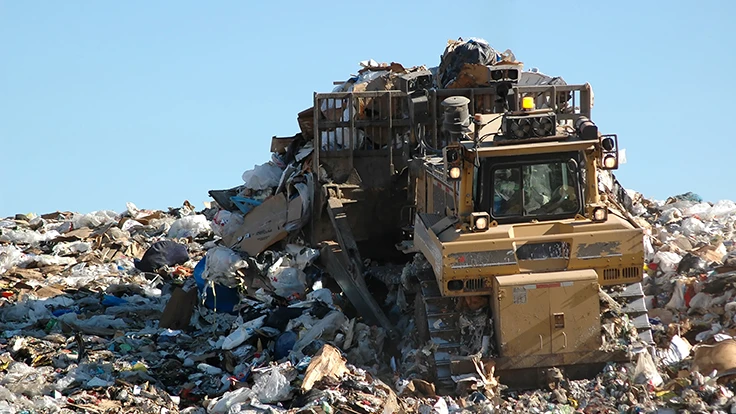
 |
| Click here for an enlarged version of the infographic. |
A new study conducted by the Earth Engineering Center (EEC) of Columbia University has found that if all of the municipal solid waste (MSW) that is currently put into landfills each year in the United States were diverted to waste-to-energy (WTE) power plants, they could generate enough electricity to power nearly 14 million homes annually, or 12 percent of the U.S. total. According to the study, this shift also could reduce greenhouse gas emissions by at least 123 million tons of carbon dioxide equivalents per year, an amount comparable to taking more than 23 million cars off our roads.
The new study, “2014 Energy and Economic Value of Municipal Solid Waste (MSW), including and Non-recycled Plastics (NRP), Currently Landfilled in the Fifty States,” found that the recovery of resources from waste diverted from landfill in the United States increased between 2008 and 2011. The recycling of materials from MSW improved by 18.5 million tons, and the tonnage of materials processed by WTE facilities grew by 3.8 million tons during this period.
Key statistics from the study are illustrated in a new infographic, pictured at the right, “The Power of Waste.”
The study’s authors noted that, while some individual states have invested in infrastructure to boost recycling and energy recovery from MSW – Connecticut, Maine, Massachusetts, Minnesota, and New Hampshire topped the list – overall, European countries have set a much higher bar. For example, the study calculated that if the United States were to deploy district heating systems similar to countries such as Denmark, Germany, Sweden and Norway, our current waste stream could provide heat for close to 10 million additional homes.
“Modern technologies that convert waste into energy present a good opportunity to significantly reduce our reliance on landfills, lower our carbon footprint, and provide renewable energy to businesses and communities,” says Nickolas Themelis, director of the Earth Engineering Center at Columbia University. “Currently, many developed nations are further along in embracing and expanding their use of energy recovery technologies as a vital part of their sustainable resource management systems. This presents an important opportunity for city planners and policy makers in the United States.”
Sponsored by the American Chemistry Council (ACC), Washington, D.C., the study is based on data obtained in Columbia University’s 2014 Survey of Waste Management in the U.S., which looked at waste management statistics during 2011, and from MSW characterization studies in several states.
Engineers at the Earth Engineering Center also calculated the quantity of non-recycled plastics – a subset of MSW that remains after plastics that can be economically recycled have been extracted –available for energy conversion. This latest study expands on an earlier EEC study (published in 2011 and based on data from 2008) by including (in addition to plastics in MSW) plastics that are not counted by the U.S. Environmental Protection Agency as MSW but that are disposed in landfill, such as construction demolition debris and auto shredder residue.
According to the study’s authors, plastics represent 11 percent of the total U.S. waste stream. The total recovery rate for plastics, which includes both recycling and energy recovery, increased from 14.3 percent in 2008 to 16.6 percent in 2011. The recycling rate for plastics increased by 21 percent between 2008 and 2011 to reach nearly 2.7 million tons. The study also found that if all non-recycled plastics in the U.S. were converted to energy through facilities that use modern plastics-to-oil technologies, they could produce nearly 6 billion gallons of gasoline, enough to fuel nearly 9 million cars per year.
"Every day, plastics significantly enhance our ability to reduce, reuse, recycle and recover more of our resources,” says Steve Russell, vice president of plastics for ACC. “These important findings show that, while we’re making progress, we have a vital opportunity to recycle and recover more of these valuable materials.”
Get curated news on YOUR industry.
Enter your email to receive our newsletters.
Latest from Recycling Today
- Combined DRS, EPR legislation introduced in Rhode Island
- Eureka Recycling starts up newly upgraded MRF
- Reconomy Close the Gap campaign highlights need for circularity
- Nickel carbonate added to Aqua Metals’ portfolio
- EuRIC, FEAD say End-Of-Life Vehicle Regulation presents opportunity for recyclers
- Recyclers likely to feel effects of US-China trade war
- BCMRC 2025 session preview: Navigating battery recycling legislation and regulations
- Yanmar Compact Equipment North America appoints new president






